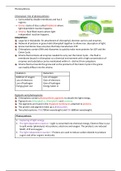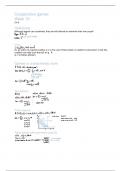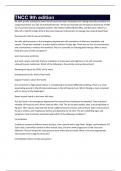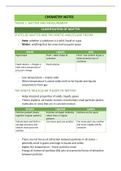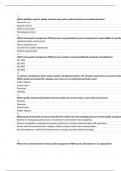looking at how we can use that in the gym environment and
in particular look at what we refer to as contrast training
= basically what we look at when we do a heavy movement with a plyometric
movement. we try and activate within that is what is known as post activation potentiation
which is effectively also known as PAP. Try and look at how we can start to utilize our
nervous system to stimulate greater jump Heights and more force output.
a back squat coupled with a counter movement jump and what we're looking to do here
is couple a maximum output in vertical force with the squat and our plyometric option which
is also with vertical force of the counter movement jump. today we're going to stick to just the
vertical side so a squat with a counter movement jump and see if we can't stimulate a little
bit more height and better contact time.
Back squat
- ideally we want to use a fairly maximum load so it does take a little bit of a warm-up
to get her ready but today we're gonna use a 3rm and then we're gonna move over to
the jump mat over here and try and do a continuous counter movement jump. we're
going to use three reps of this as well.
- with the squat we're going to look to try and charge that nervous system so we can
move straight onto the jump mat and apply as much force as possible.
- research out there tends to look at three to five minute breaks between our heavy
movement and our plyometric movement. in a gym setting especially with athlete if
you're under time three to five minutes he's going to be way too long to be sitting
around with in an environment where you may only have one hour with your athlete
so what we tend to do is we shorten that rest period and we go directly into it.
- it may not be as effective as if we had three to five minutes but we still get a
good bang for our buck and that's what we're gonna try
- demonstration of our 3rm get that nervous system fired up and then she's going to
move over and we're gonna look at our contact time for her continuous jumping.
contact time
- move over to our plyometric component and see if we can't stimulate a little bit more
jump height so you will notice the feedback here will be our contact time we want to
get below 200 milliseconds and her jump height we want to get above 30 centimeters
so she'll hit green when I contact times good she'll hit blue when our Heights good.
challenge her a little bit more we can start to creep that jump height a little bit so she has
to be challenged to get 32 34 36 whatever it might be and we can also start to challenge
that contact time if we like but the idea is as her back squat improves we can charge that
nervous system a little bit more and then we can start to utilize the plyometric component.
in particular look at what we refer to as contrast training
= basically what we look at when we do a heavy movement with a plyometric
movement. we try and activate within that is what is known as post activation potentiation
which is effectively also known as PAP. Try and look at how we can start to utilize our
nervous system to stimulate greater jump Heights and more force output.
a back squat coupled with a counter movement jump and what we're looking to do here
is couple a maximum output in vertical force with the squat and our plyometric option which
is also with vertical force of the counter movement jump. today we're going to stick to just the
vertical side so a squat with a counter movement jump and see if we can't stimulate a little
bit more height and better contact time.
Back squat
- ideally we want to use a fairly maximum load so it does take a little bit of a warm-up
to get her ready but today we're gonna use a 3rm and then we're gonna move over to
the jump mat over here and try and do a continuous counter movement jump. we're
going to use three reps of this as well.
- with the squat we're going to look to try and charge that nervous system so we can
move straight onto the jump mat and apply as much force as possible.
- research out there tends to look at three to five minute breaks between our heavy
movement and our plyometric movement. in a gym setting especially with athlete if
you're under time three to five minutes he's going to be way too long to be sitting
around with in an environment where you may only have one hour with your athlete
so what we tend to do is we shorten that rest period and we go directly into it.
- it may not be as effective as if we had three to five minutes but we still get a
good bang for our buck and that's what we're gonna try
- demonstration of our 3rm get that nervous system fired up and then she's going to
move over and we're gonna look at our contact time for her continuous jumping.
contact time
- move over to our plyometric component and see if we can't stimulate a little bit more
jump height so you will notice the feedback here will be our contact time we want to
get below 200 milliseconds and her jump height we want to get above 30 centimeters
so she'll hit green when I contact times good she'll hit blue when our Heights good.
challenge her a little bit more we can start to creep that jump height a little bit so she has
to be challenged to get 32 34 36 whatever it might be and we can also start to challenge
that contact time if we like but the idea is as her back squat improves we can charge that
nervous system a little bit more and then we can start to utilize the plyometric component.




